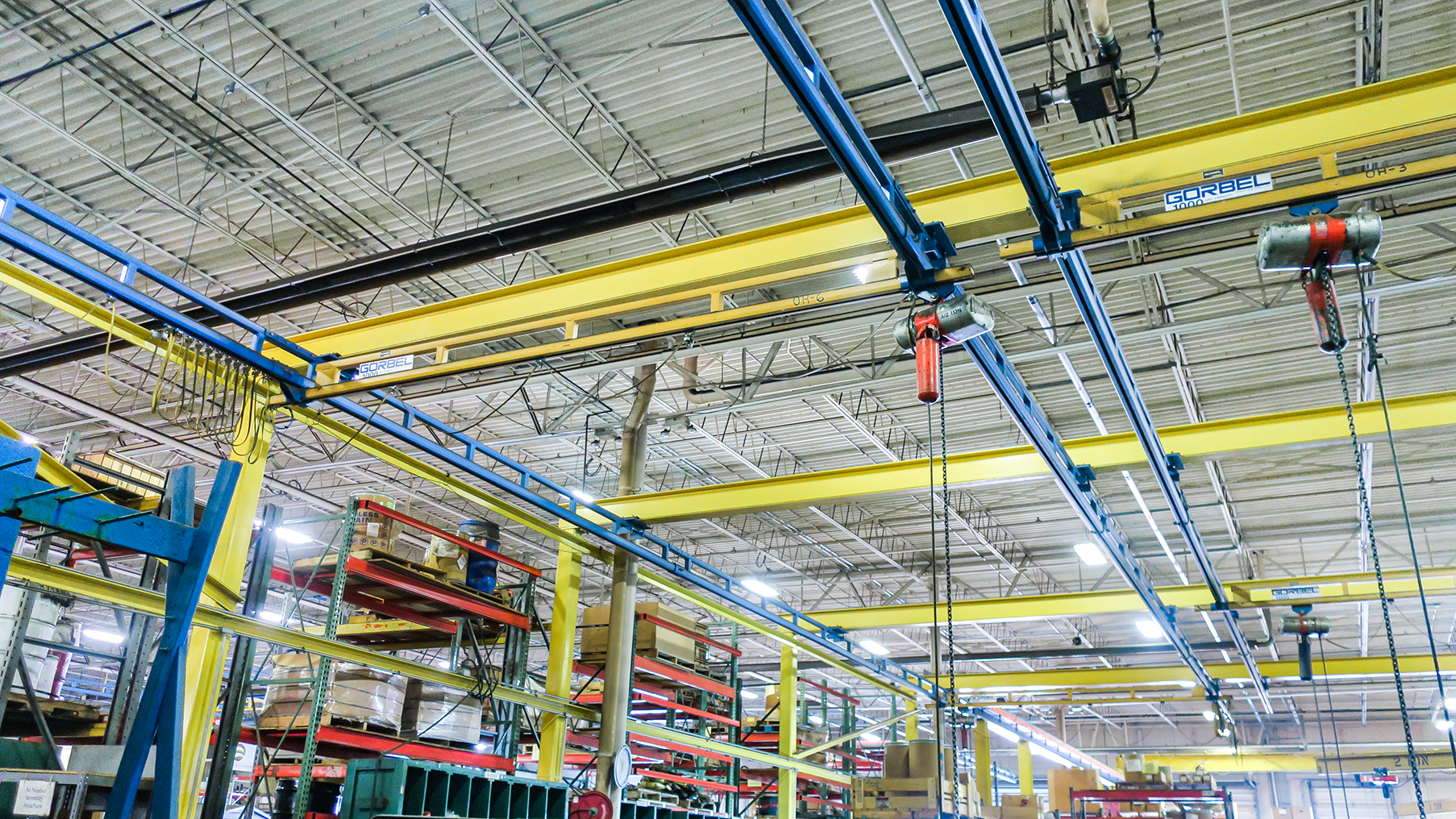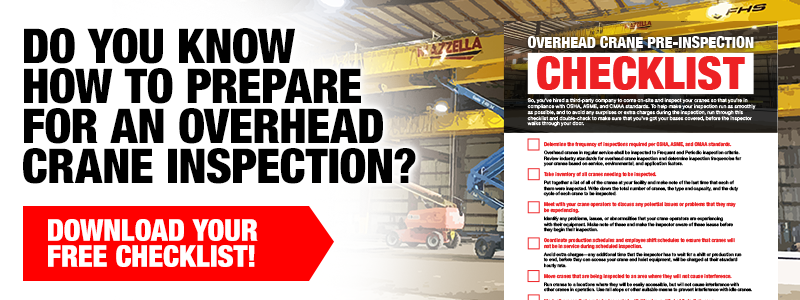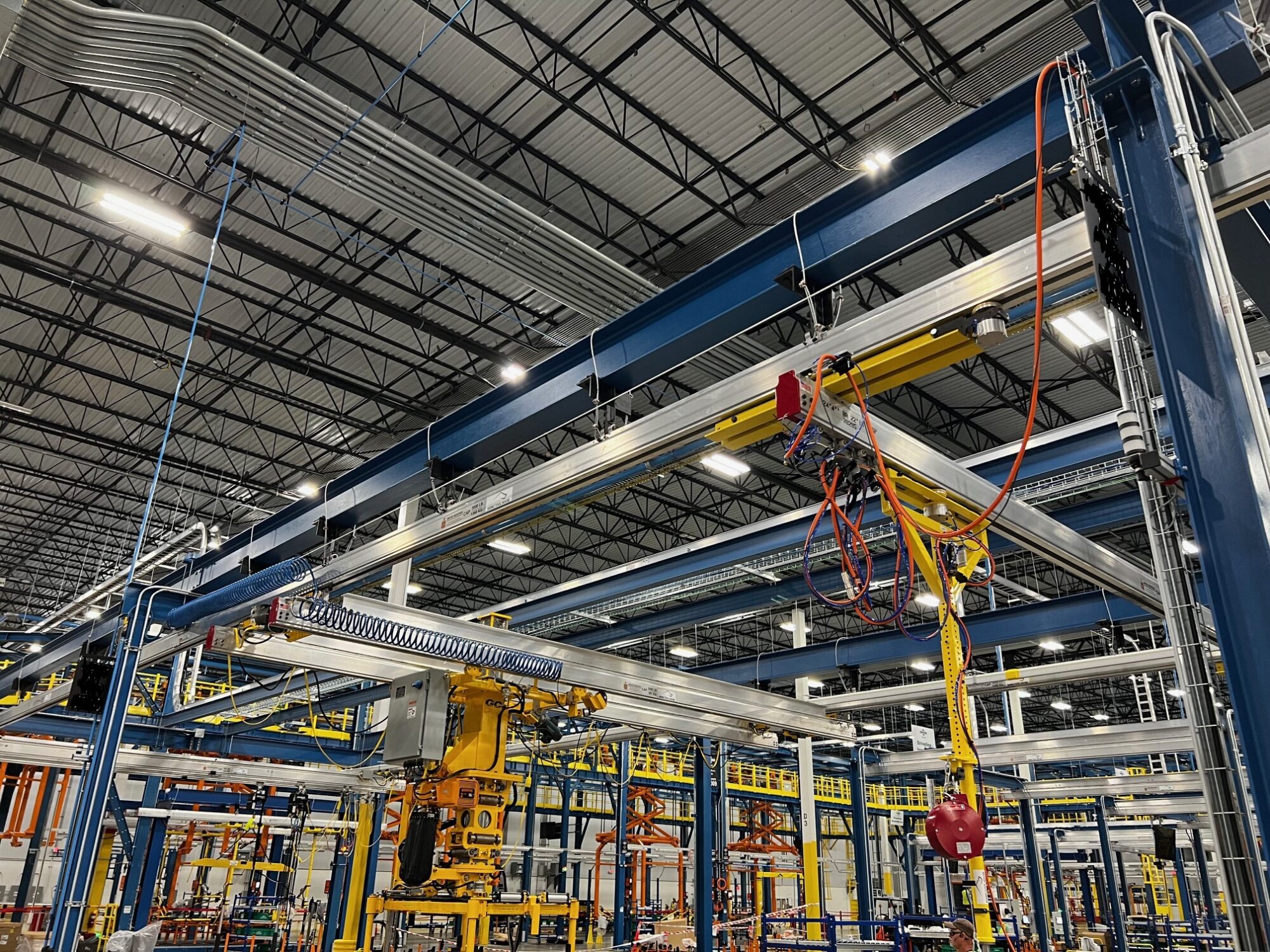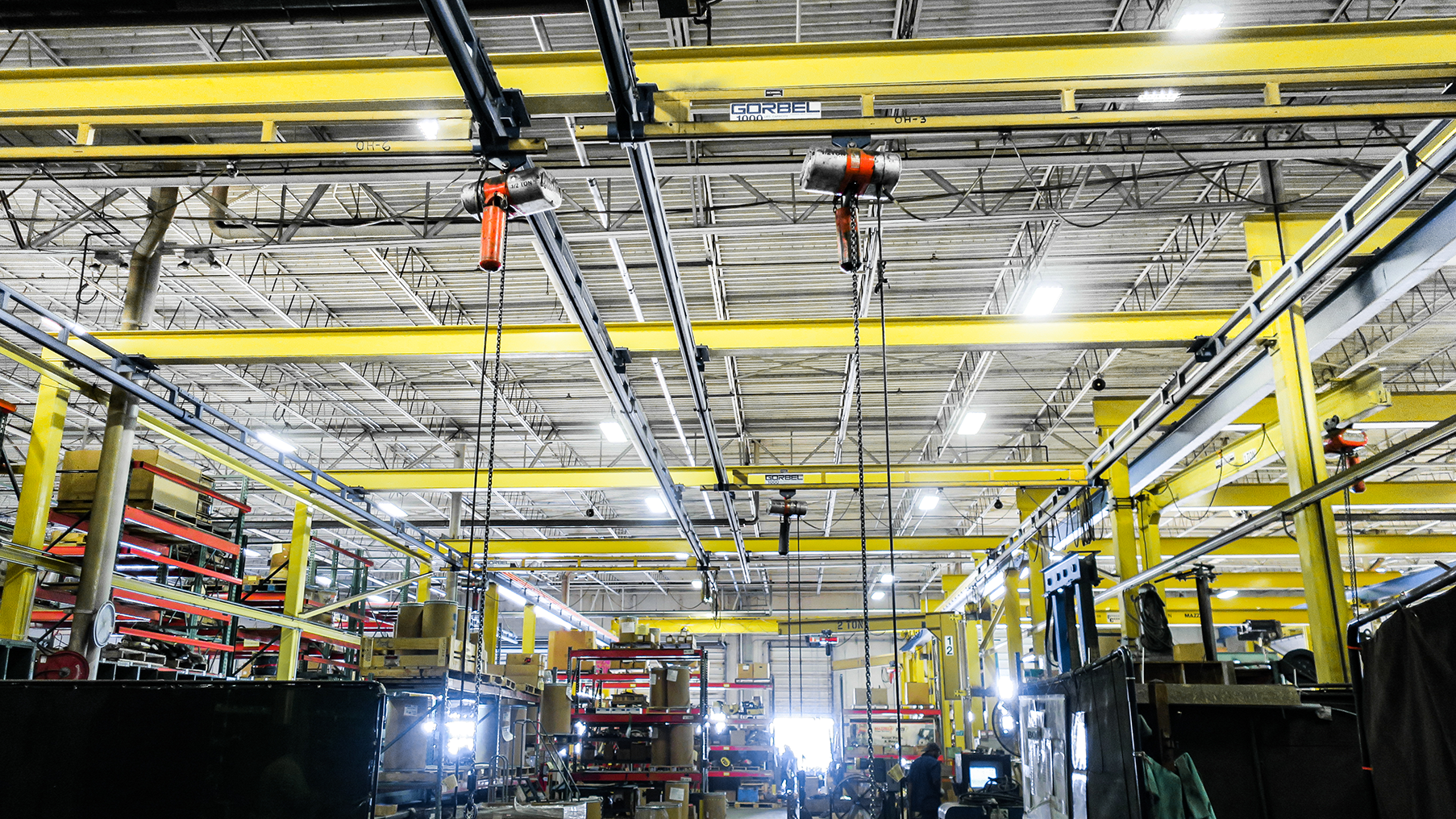Are Enclosed Track Overhead Cranes Right for You?
Find out how enclosed track systems differ from traditional overhead cranes, what their key advantages are, and what industries could benefit from using them.
Overhead cranes are a vital piece of equipment that can speed up processes, improve worker safety, and save your organization money in the long run. However, as you will learn quickly during the research process, overhead cranes are not a monolith.
There are many types of overhead cranes—with each having their best use cases, downsides, and price ranges.
In certain environments, an enclosed track crane system would be a great choice. But how are enclosed track systems different from traditional overhead crane models, and are they a good fit for your application and environment?
By the end of this article, you will have a better understanding of the basic components of enclosed track overhead cranes, how they are different from other crane models, the potential downsides of using them, and if they are a good fit for your organization.
Here’s what we will cover:
What is an Enclosed Track Overhead Crane?

Enclosed track overhead cranes are light-duty overhead crane systems meant to lift and transport loads horizontally across a work site. They are often used in workstation crane systems or modular setups.
With a smaller profile, enclosed track cranes were designed for more intimate environments, where workers are close to loads, and are frequently handling them manually or semi-automatically. They were designed with speed in mind, making them great for lifting light loads and repetitive tasks—this makes them a popular choice for assembly line work.
All enclosed track cranes come with a track / rail that can be mounted to a ceiling or a structure. They can also be designed as freestanding structures. The enclosed track design helps prevent dirt, dust, and similar debris from compromising the trolley’s wheels.
Inside the track sits a trolley, which rolls along the length of the track and carries the hoist or load. The trolleys have a low rolling resistance that makes for seamless tracking above the load. This enclosed track design is also popular in fall protection applications.
How are Enclosed Track Cranes Different from Traditional Overhead Cranes?
The main difference between enclosed track cranes and typical crane models is their design. As the name implies, enclosed track systems use enclosed tracks, whereas traditional overhead crane models use open I-beams or wide-flange beams. While overhead cranes can be top running or under hung, almost all enclosed track systems are under hung.
Another prominent difference between the two crane models is their lifting capacity. The enclosed track systems are for light loads only, with a maximum capacity of 3 tons, but 2-ton systems are the most common. Conversely, traditional overhead crane models will be able to handle heavier loads.
While some enclosed track rail manufacturers have made more heavy-duty rails, it is not substantially higher. And, regardless, they’re incredibly rare and also expensive.
The other notable difference between the two models is that enclosed track rail typically relies on manual operation from workers, while traditional cranes are often powered by an electric driven motor, and workers can often control the system through a remote control. While enclosed track systems can be powered, manual operation is most common.
What are the Best Environments for Enclosed Track Cranes?

The most common environment for enclosed track rails are assembly lines at automotive plants and general manufacturing facilities. In automotive plants, enclosed track rails are used in the final assembly stage to lift lighter components and move them along the assembly line. They can braced from the ceiling, so you don’t have to lose any footprint around your assembly line. They can also be used in environments where a traditional workstation crane could be used, too.
Our team has also seen them in warehouses and logistics centers, maintenance and repair shops, and food and beverage processing facilities. They can also be used in outdoor settings. Enclosed track systems are also popular in aerospace facilities to lift smaller components.

What are the Biggest Benefits of Enclosed Track Overhead Cranes?

Enclosed track cranes bring several benefits for workers that can’t be found in traditional overhead cranes. Some of the more notable benefits include:
Quicker Installation Times
Most enclosed track cranes can typically be installed in a single day, considerably faster than a full-size overhead crane system, which can require several days or weeks to install.
If you have a continuous assembly line, where the parts are coming down a conveyor belt or along an assembly line, then you can have hundreds of feet of rail with multiple cranes suspended from the rail for each workstation. So, you can have a simple, one-time installation, rather than a separate system for every workstation crane.
Most enclosed track systems are self-contained, where the manufacturers make their own floor support. So, when the manufacturer delivers the system, you put your supports and the enclosed track up. However, a regular overhead bridge crane would take several days to install the rails and the runways, and then several hours to install the bridge. However, some providers do supply anchors and epoxy, and others do not.
Improved Worker Safety and Productivity
The added control and low rolling resistance inside the rail reduces the chance of injury for workers, which is especially common in the repetitive lifting of loads. Their smaller footprint and ergonomic design help improve productivity levels, especially around an assembly line.
Extra Maneuverability
Enclosed tracks are light weight alternatives to other overhead cranes, especially the aluminum-based rails. This makes it easy to move them around a facility.
Lower Maintenance
Not only do the enclosed systems have a lower upfront price than traditional overhead cranes, but they will also save you money in the long run by lowering your maintenance needs. The enclosed track design prevents debris from entering the trolley system, and this will reduce wear and tear on your trolley system and keep maintenance costs down.
You still need to periodically inspect all your rolling wheels and any trolleys on a bridge. You still need to conduct all your periodic crane maintenance, but it’s not as involved as a standard overhead or bridge crane.
Should You Choose an Aluminum or Steel Enclosed Track Crane?
Enclosed track systems come in aluminum and steel rail profiles, and which one you choose will depend on your application.
For example, in the automotive industry, our experts say more than 90% of the enclosed track rail used is aluminum. When you get outside of automotive and into general industry and general manufacturing, it will be around 75-80% steel rails.
This is because steel rail is self-reinforced, whereas aluminum rail will need added external reinforcement to accommodate heavier capacities. So, if you get above 2,200 lbs with aluminum rail, then you need to have a dual girder bridge no matter what. Whereas in steel rail you can run up to 4,000 lbs on a single girder bridge.
General industry will opt for steel, as they tend to have heavier applications, and automotive plants appreciate the aluminum rails’ light weight.
The Case for Aluminum Rail Systems
As we have discussed in previous articles, our experts feel aluminum rail systems are a great choice for workers.
First, aluminum is lighter than steel, making it easy to handle and move around a facility. Aluminum systems are also less likely to corrode, which makes them ideal to use in any outdoor environment or high-moisture applications.
The aluminum bridges are a little bit lighter than steel bridges, and you get smoother rolling in aluminum track, so you have less resistance on the wheel, making them more ergonomic.
Aluminum systems offer these benefits all while being in a relatively similar price range to steel systems. While many people believe that aluminum profiles are more expensive than steel systems, it depends on the application and the size of the system.
What are the Downsides of Enclosed Track Overhead Cranes?
The various benefits of enclosed track rails (lower maintenance, quick installation, improved maneuverability) come at one significant sacrifice: limited lifting capacity.
Enclosed track cranes are not suitable for moving very heavy loads that exceed their 3-ton capacity limit. In applications with loads exceeding 3 tons, typical overhead cranes are going to be your best option.
Enclosed track systems are also limited by the required bridge span. Enclosed track rails are extruded and restricted by maximum continuous length. The longest available bridge span is 40′ with spans up to 30′ being the most common.
Final Thoughts

With improved safety for workers, quick installation times, and improved maneuverability, enclosed track systems are a great alternative to more traditional overhead crane models in certain applications.
Enclosed rails will be great for work in light weight, repetitive applications. They can be used in automotive plant assembly lines and in general manufacturing plants. They are also a great fit in warehouses and shipping facilities, aerospace, and maintenance and repair shops. Their corrosion resistance also makes them ideal for outdoor applications.
However, if you work in a steel mill or do construction, where heavy lifting is common, you will want to consider other overhead crane options.
Mazzella has been a leader in designing, manufacturing, installing, and inspecting overhead cranes for decades, and we can help your organization keep your loads and workers safe. Whether you want to discuss enclosed track rails further or need to schedule a crane inspection, contact one of our team members today.

Copyright 2025. Mazzella Companies.
